 Abraham Lincoln
If given the truth, the people can be depended upon to meet any national crisis...
Abraham Lincoln
If given the truth, the people can be depended upon to meet any national crisis...
 Guildford news...
for Guildford people, brought to you by Guildford reporters - Guildford's own news service
Guildford news...
for Guildford people, brought to you by Guildford reporters - Guildford's own news service
Letter: Questions Over Council’s Link Road Documents
Published on: 28 Oct, 2015
Updated on: 28 Oct, 2015
By Frank Phillipson
At a meeting of Guildford Borough Council (GBC) in early October, Cllr Matt Furniss stated that the Clay Lane Link Road plan (CLLR) was “not creating more traffic, just redistributing it so it flows a lot better in and out of the estate”.
 However, his statement does not tie in with what the council’s documents about the CLLR say about Slyfield Industrial Estate. These assert that the Link Road will “…..help unlock the estate’s economic potential by enabling existing businesses to develop and attract new businesses….” and be “…part of the infrastructure necessary to start regeneration of the industrial estate…” with the road access situation at present “…..preventing growth on the estate….”.
However, his statement does not tie in with what the council’s documents about the CLLR say about Slyfield Industrial Estate. These assert that the Link Road will “…..help unlock the estate’s economic potential by enabling existing businesses to develop and attract new businesses….” and be “…part of the infrastructure necessary to start regeneration of the industrial estate…” with the road access situation at present “…..preventing growth on the estate….”.
In an Enterprise M3 (partners with GBC for funding) document relating to the Slyfield Area Regeneration Project (SARP) – Clay Lane Link Road it states that GBC “estimate that a total area of 29,000 square metres of land for further employment generating uses is available with 15,000 square metres of additional floor space….”.
Also: “There are other long-term opportunities for redevelopment and/or intensification of use.”
The document goes on to say that with improved access GBC would be able to charge more for rents and leases for the industrial units.
Cllr Furniss’s statement is more in line with the Traffic Assessment figures that are presented in the CLLR documents which only seem to show the existing traffic levels “Without Link Road” and “With Link Road”. Despite the above additional new industrial unit floor areas being known there is no mention of them in the CLLR documents or the estimated traffic that would be generated by them.
It is also almost inconceivable that the Slyfield Area Regeneration Project’s 1,000 new homes will not use the CLLR for at least part of its vehicle access. This too has not been factored into the Traffic Assessment figures. The eastern part of the Industrial Estate where the Link Road is situated falls within the Slyfield Area Regeneration Project’s location. Documents relating to the Slyfield Area Regeneration Project (SARP) state: “Infrastructure requirements will include a Clay Lane Link Road, which could be delivered in two phases, which will connect to the Local Road Network.”
It is wholly inappropriate to carry forward the CLLR scheme without a full Traffic Assessment study that takes into account:
1. New industrial units of at least 15,000 square metres on Slyfield Industrial Estate.
2. The 1,000 homes of the Slyfield Area Regeneration Project.
In the CLLR documents, modifying of the existing junction of the A320/Moorfield Road is rejected because:
a. Improvement of this junction would put pressure on other junctions along the A320 which would need to be addressed.
I am not aware that any of the other junctions on the A320 have any significant capacity problems. The main impediment to the free flowing of traffic along the A320 is its junction with Moorfield Road.
b. Surrey County Council have previously said that improvement of the A320/Moorfield Road junction would not be cost effective.
When stating that it was not cost effective, SCC were talking about funding the improvement from their normal road improvement budget. This would not apply with the current funding situation.
c. The A320 runs “alongside residential areas” and it is therefore not desirable to increase traffic along it.
The A320 has largely been routed away from residential areas into its own green corridor between Stoughton Road and Hazel Avenue. Most of this route is well screened from the housing areas. There does not seem to be any concern about the additional traffic along the A3100 London Road in Burpham where it runs directly along the frontage of housing.
The CLLR documents do not address the continuing need to use the existing A320 junction which is nearer the town centre and other areas of Guildford. That junction is likely to remain being used by the majority of the people wanting to visit the large number of car showrooms and other traders on the estate.
There is also no compulsion on HGVs, lorries and vans etc, to use the new link road and they will also use the existing junction if it’s convenient. It is therefore necessary that the A320/Moorfield Road junction needs to be improved to some degree even if the link road is built.
With regard to the new roundabout junction with Clay Lane, it is claimed that this will reduce speeds in this vicinity. I would suggest that the existing sharp bend already does this. Inclusion of a “Jet Lane” in the design will not slow down west to east traffic in Clay Lane.
The roundabout itself is unnecessarily complicated and would be better if the “Jet Lane” was discarded and it was just a four-arm design with one arm serving the premises of the firm Chambers.
The “Jet Lane” can lead to conflict with cyclists who prefer to ride on the road. Cars entering or leaving it could conflict with cycle movements with cars travelling faster emerging on the inside of a cyclist.
The “Jet Lane” at the roundabout at the junction of the A245 Parvis Road and the A318 Sopwith Drive in Byfleet was closed due to a fatal cyclist accident it caused in this way.
It is claimed that westbound traffic through Jacobs Well will be reduced as it will divert along the CLLR and Moorfield Road. However, evening peak traffic comes off the A3 to avoid hold ups and uses Clay Lane, partly A320 Woking Road, Salt Box Road, the A322 Worplesdon Road and Holly Lane as Guildford’s “northern ring road”.
The Saltbox Road roundabout on the A320 is much closer to the Clay Lane junction than the Moorfield Road junction and it therefore likely that traffic will continue to travel along Clay Lane.
Some of this traffic from the A3 is accessing the Woking area via Blanchards Hill and the A320 (via the Saltbox Road roundabout) rather than coming off the A3 at Painshill, Cobham and negotiating the heavily congested A245 through Byfleet.
The CLLR documents talk about modifying the existing double bend in Clay Lane (the scene of two fatal accidents in the past) but only state that the road in this vicinity will be subject to “widening and safety” improvements. There is no mention of realigning the road and nor is this shown on the plans. In addition to realigning the road, provision of a right turn lane to serve Riverview Business Park opposite Burpham Court Farm would be desirable.
With additional traffic (to serve not only the existing use, but also the expansion of Slyfield Industrial Estate and the 1,000 homes of SARP) coming off the A3 and using the A3100 London Road in Burpham, has no thought been given to creating a new southbound off slip from the A3 up and on to Clay Lane to a roundabout at the eastern end of the bridge over the A3?
There does seem to be enough room for this between the edge of the carriageway and the “bund” built to shield the Weybrook Farm development from the A3. The central reservation of the A3 is quite wide here and if necessary it could also be used to move the A3 southbound carriageway westwards to give more room.
The CLLR documents contain no measures to address the shortcomings of Moorfield Road if it is to become a through route with additional traffic.
These include continuous parked vehicles along both sides with numerous accesses and road junctions having limited visibility due to the parked vehicles.
The long straight of Moorfield Road encourages drivers to attain fairly high speeds, which is inappropriate given the above situation and also the hazard of drivers searching to find companies’ addresses on the estate which can distract them from concentrating on other road users.
In the GBC/SCC/ Thames Water “Slyfield Regeneration Project, Planning Performance Agreement 2008” in states among other things under “Transport” that the project should:
1. Improve the flow of traffic within the existing estate.
2. Optimise off-street parking.
3. Provide adequate parking to avoid overflow parking on surrounding streets.
None of the above three points appear to have been addressed in the latest information.
Responses to Letter: Questions Over Council’s Link Road Documents
Leave a Comment Cancel reply
Please see our comments policy. All comments are moderated and may take time to appear. Full names, or at least initial and surname, must be given.Recent Articles
- Charity’s New Programme Meets Needs of SEND Children Without School Places
- Pasta Evangelists to Open First Restaurant Outside London – Right Here in Guildford
- Police Seek Witnesses to Park Barn Assault
- Notice: Rosamund Community Garden
- Village School Set to Close Due to Falling Birth Rate
- Letter: Waverley’s Management of CIL Money Is Morally Questionable
- Dragon Interview: MP Hopes Thames Water Fine Will Be ‘Final Nail in Its Coffin’
- Conservative Claims on Use of CIL Payments ‘Political Theatre’ Say Lib Dems
- Thames Water Faces £122 Million Penalty Following Ofwat Inquiry
- New Knife Crime Strategy for Surrey Announced


Recent Comments
- Patrick Bray on Public Asked for Views on SCC’s Proposal for Reduced Speed Limits
- Mark Percival on Public Asked for Views on SCC’s Proposal for Reduced Speed Limits
- George Potter on Public Asked for Views on SCC’s Proposal for Reduced Speed Limits
- Helena Townsend on Public Asked for Views on SCC’s Proposal for Reduced Speed Limits
- Peter Martin on Conservative Claims on Use of CIL Payments ‘Political Theatre’ Say Lib Dems
- Lauren Atkins on Conservative Claims on Use of CIL Payments ‘Political Theatre’ Say Lib Dems
Search in Site
Media Gallery
Dragon Interview: Local Artist Leaves Her Mark At One of England’s Most Historic Buildings
January 21, 2023 / No Comment / Read MoreDragon Interview: Lib Dem Planning Chair: ‘Current Policy Doesn’t Work for Local People’
January 19, 2023 / No Comment / Read MoreA3 Tunnel in Guildford ‘Necessary’ for New Homes, Says Guildford’s MP
January 10, 2023 / No Comment / Read More‘Madness’ for London Road Scheme to Go Ahead Against ‘Huge Opposition’, Says SCC Leader
January 6, 2023 / No Comment / Read MoreCouncillor’s Son Starts Campaign for More Consultation on North Street Plan
December 30, 2022 / No Comment / Read MoreCounty Council Climbs Down Over London Road Works – Further ‘Engagement’ Period Announced
December 14, 2022 / No Comment / Read MoreDragon Interview: GBC Reaction to the Government’s Expected Decision to Relax Housing Targets
December 7, 2022 / No Comment / Read MoreHow Can Our Town Centre Businesses Recover? Watch the Shop Front Debate
May 18, 2020 / No Comment / Read More



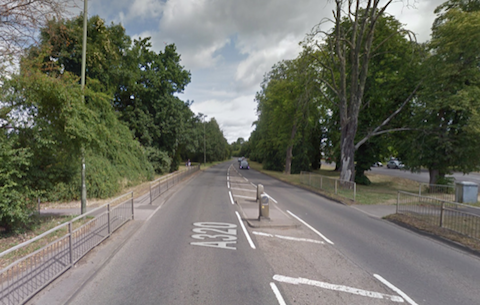
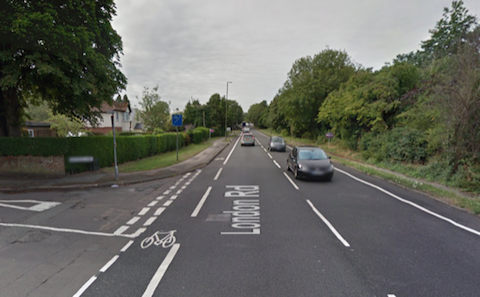
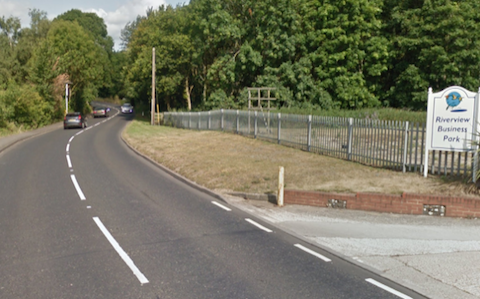
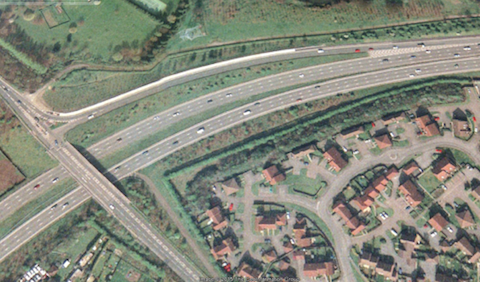
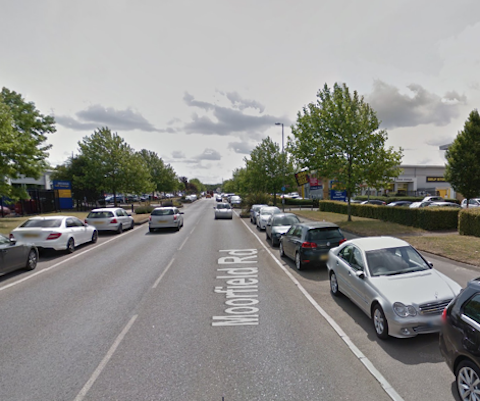







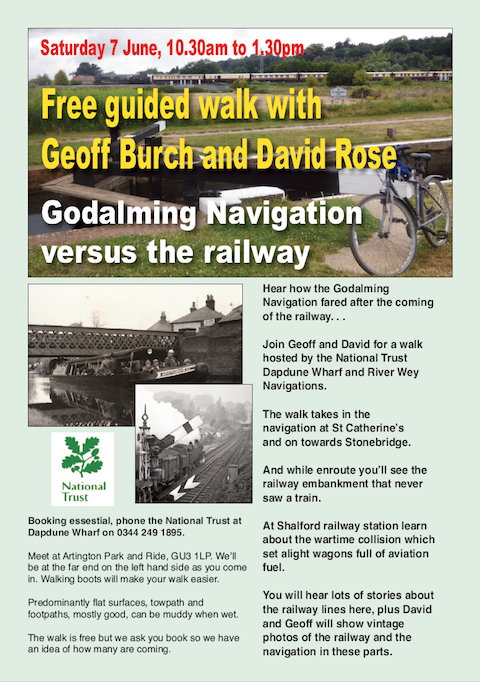


Jim Allen
October 29, 2015 at 1:22 am
A very interesting letter with many good points but several points need correcting: Full documentation of the information below is available should any wish to challenge them.
1: The most important: on a traffic level is that no survey has been completed to show where the traffic “comes from” and “goes to” in respect of the industrial estate. So the road may need to go across Stringers Common not the flood plain, No one knows! (Unknown facts that are not documented are being used to back up a shoddy marketing proposal).
2: Speeds on the A320: the mean speed is 34mph (there is a speed limit of 30mph) but considerably lower than the 40mph on Clay Lane which only achieves 30mph and 38mph (documented) – a clear indication sheer weight of traffic is restricting speeds on Clay lane.
2a: Traffic levels are higher on Clay lane than on the A320: only the adjusted delays are greater– 12% on the A320 and 3% on Clay Lane. This reflects the commercial ‘A’ road designation and the unclassified Clay Lane with HGV weight restriction.
3: Serious accidents are more common on Clay Lane than the A320 – (documented).
4: There is no point in making the Clay Lane A3 bridge four-way because it would fundamentally change traffic flows north of Guildford (causing multiple right turns in the road systems of the northern area of Guildford) – it is the A320 Junction with the A3 which needs south exit and access, (common sense) and improving along its length to the Woking boundary as agreed in the 1990s.
4a: The correct location for a four-way intersection A3 north of Burpham is at Potters Lane with link to the A25 – this solves a multitude of problems both inside and outside Guildford urban area. Traffic reduction in five villages.
5: Traffic in Burpham is already running at one car per 1.2 seconds at 40mph during maximum periods, like the three hours this afternoon. It takes a car four seconds to pull away from a junction, any intersection placed on Clay Lane will simply be a place to queue, nothing more. (documented).
6: The traffic stats in use by GBC planning have a standard deviation of 400 over an average of 1,500 – some considerable inaccuracy.
7: The additional traffic numbers need to include (as everything is all just proposals) say Aldi at 1,600 plus 20%, Slyfield at 1,800, Gosden Hill at 3,800, Merrow at 1,800, Merrow Business Park say about 1,000, giving an additional 10,000 accessing the A3 and other roads in Burpham (based on 1.8 cars per household).
8: The major traffic delays on the A320 are caused by ‘local’ light to medium commercials not A3-bound heavy vehicles.
9: The transfer station traffic delays are caused by failure to schedule both input and output vehicles. I ask why have a vehicle sat for half an hour on Moorfield Road using it as a lorry park when there is a layby on the A3 which could provide the wait point?
10: There are now proven new jobs if this road is built – they are all currently council transfer jobs from other location.
11: Air polution – sorry haven’t done the full calculations yet, but basically NoX a rise from 24 to 27 micrograms per cubic metre.
In conclusion:
It would be far more rational to:
A: Sort the A320 first before capital expenditure against common sense and damage to the flood plain. Note: some six options at Moorfield alone have been ‘rejected for childish reasons’. The current junction is running (stationary) way below international capacity saturation point of 1,800 vehicles per lane per hour.
B: Refurbish the water treatment works in its current location – the ‘problems’ will disappear with proper refurbishment, not it’s proposed move to another location as the same equipment will be used at either site.
C: Build the road alongside the treatment works (shortest route to main traffic artery 0.85 miles). Or use one of the other exits currently padlocked.
D: Move all industrial ventures to Slyfield from satellite industrial sites and
E: Build the homes on the satellite sites thus spreading the traffic load and reducing the overall cost of the project.
Bibhas Neogi
October 29, 2015 at 7:49 am
An excellent letter by Mr Frank Phillipson on the issues concerning CLLR.
I would reiterate that a direct Slyfield link with the A3 would be a much better option to go for and it would obviate the traffic issues on existing Clay Lane and help improve the A3 junctions as well. I would draw attention to my comments last month here on the Dragon News:-
https://guildford-dragon.com/2015/09/27/have-your-say-on-proposed-clay-lane-link-road/#comments
Moorfield Road junction with the A320 of course needs to be improved and parking on this road as clearly shown in the picture must be made off-road and speed reduction measures would enhance safety.
Considering the SARP and the possibility of 1,000 new homes, further analyses of CLLR by taking all these factors into account are warranted.
It would be premature to proceed with this scheme without considering Highways England’s A3 improvement scheme that is currently being developed by them.
Neville Bryan
October 29, 2015 at 11:34 am
Just to add to this excellent letter and correspondence, I would observe that just up the A320 South of Woking, there are approved plans afoot to put a 1,700 pupil school, running track etc, on the old Nursery Land adjacent to the Egley Road. I will ignore for now the additional housing, and traveller sites also planned by Woking.
This school site alone will have an additional major effect on the Stoke / Slyfield / Jacobs Well area too.
Add all the points together, and I am really struggling to see the joined up and long term thinking in the current Clay Lane Link Road, Slyfield entrance proposal.
Nobody it seems, including me, doubts we need a rear (could it be the main?) entrance to Slyfield, but I am totally in agreement with Mr Neogi on this: do it once and do it right – find a way to link it direct off the A3 and take the pressure off the local roads, not increase it.
Frank Phillipson
November 7, 2015 at 3:39 pm
Below are the comments from Highways England about a direct access to Slyfield from the A3 as given in GBC’s replies to questions asked at the pre-application consultation on their posters at the recent consultation events:
“Highways England would not support an additional junction on the A3 for the following reasons:
• Due to the short distance between the local junctions, introducing another set of merges/ diverges will negatively affect the safety of the network due to the very short weaving length between junctions. This would also make signing the junctions extremely difficult, as a full set of compliant Advance Direction Signs could not be accommodated without conflicting with other signs.
• Highways England is developing options for improvements to the section of the A3 from the A31 Hog’s Back to the A3100 interchange as there are concerns with the closely spaced junctions, inappropriate speeds and weaving movements that affect the safe operation of the network. A future scheme will aim to improve journey time reliability and traffic flow along the A3 carriageway; a new junction in Burpham would go completely against what is trying to be achieved.”